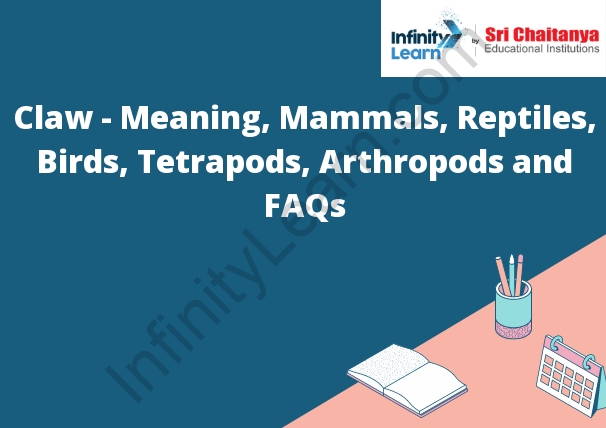Table of Contents
What is a Claw?
A claw is a curved, pointed tool that is used to grip or tear objects. Claws are found on the front paws of some animals, such as cats, dogs, and bears. They are used for gripping prey, tearing meat, and digging. Claw – Meaning Mammals Reptiles Birds Tetra pods Arthropods and FAQs.

Tetra pods
Tetra pods evolved from lobe-finned fishes, which evolved from fish with scales. The first tetrapods were amphibians, which lived in water and on land.
Lobe-finned fishes are a group of fish that include the coelacanths and the lungfish. They are distinguished by their fleshy, lobed fins. These fins evolved from the fins of fish with scales.
The first tetra pods were amphibians. They lived in water and on land. They were able to breathe air and reproduce on land.
Mammals
Mammals are warm-blooded animals that have fur or hair. They nurse their young with milk from mammary glands and most are able to produce and secrete this milk.
Mammals are a class of vertebrate animals. They are distinguished from other vertebrates by the presence of mammary glands, which secrete milk for nursing their young. Other features that distinguish mammals include fur or hair, four limbs that terminate in digits, and the ability to regulate their own body temperature.
Mammals are the largest class of animals on Earth, and include everything from tiny rodents to the largest land animals, elephants. They are found in nearly every environment, from the Arctic to the tropics. Most are active during the day, but some, like bats and vampire bats, are nocturnal.
Mammals nurse their young with milk from mammary glands. The milk is high in nutrients and helps the young to grow and develop. Most mammals are able to produce milk, but some, like the monotreme mammals, lay eggs and do not nurse their young.
Primates
Primates are a mammalian order that contains the lemurs, lorisoids, monkeys, apes, and humans. They are characterized by their large brains, binocular vision, and grasping hands and feet. Most primates are arboreal, but some, such as baboons and humans, are adapted to terrestrial life. All primates are social animals, living in groups that typically include several adults and their offspring.
Reptiles
are ectothermic animals that are able to change their skin color in order to blend in with their surroundings. They are able to do this through the use of chromatophores, which are pigment-containing cells that are found in the skin.
Birds
Birds are warm-blooded creatures that have feathers and wings. They are able to fly and typically eat insects or other small animals.
Amphibians
There are three main types of amphibians: frogs and toads, salamanders, and newts. Amphibians are ectothermic, which means they get their body heat from the environment. They live in both water and on land, and their skin is moist which helps them breathe. Amphibians lay eggs in water, and the eggs hatch into larvae which live in the water and breathe through gills. As they grow, they undergo metamorphosis and develop lungs, and they leave the water to live on land.
Arthropods
Arthropods are invertebrates with jointed legs and an exoskeleton. They are the largest and most diverse group of animals on Earth. There are over 1 million different species of arthropods, including insects, spiders, and crustaceans.
Claw – Meaning Mammals Reptiles Birds Tetra pods Arthropods and FAQs.





